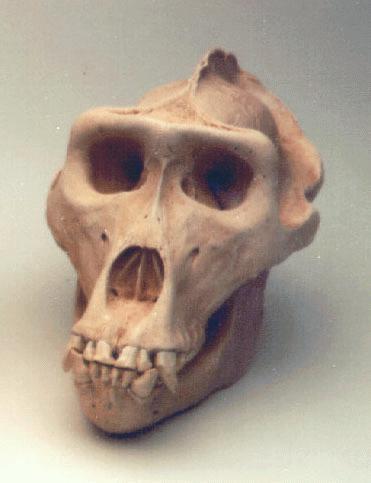Slimebeast said:
Highwaystar, I dont have time right now but Ill come back to your post in length later, but 3 quick points:
1. I never said bacteria evolve slowly. My argument is something else and it seems like you just like everyone is missing the point. Totally radically missing it. I am saying that bacteria have failed to evolve into higher order organisms, despite having amazing potential to evolve very rapidly. And that is the mystery you and others are denying to the point that it's becoming ridiculous. If you guys can't.. I don't know what to say. The intellectual capacity of some people...
2. You said "For a bacteria to become resistant to penicillin is a big evolution". It certainly is not. A simple single point mutation can be enough to alter a protein to prevent the antiobiotcs molecule to attach to the bacteria. Most antiobiotic resistance is simple like that.
3. That picture you got of the humanoid skulls. It can be devided in two groups: roughy half of the skulls are from old apes and half of them are Homo Sapiens.
|
1. We're not denying it. Your original question was "We've gone through some things before, things I have problems with. Like the lack of evolution in bacteria.", how many ways can I interpret that? I interpreted it as you saying "there is a lack of evolution in bacteria" and that was the point I answered. I apopolgise if I misinterpreted. But, let's have a go at answering that.
First off, we weren't there when multicellular life first arose, and I know that you are just going to outright deny that it occurred unless scientists more or less invented a time machine and went back in time to witness it.
Anyway, the general hypothesis is that unicellular life associated to form colonies (like stramatolites I guess), the collaborative nature of the colonies allowed them to exploit resources better than their unicellular counterparts. This was taken to the extreme to start forming multicellular life.
A similar kind of mechanism can be observed in myxobacteria, when nutrients are scarce they associate to form fruiting bodies, which is similar to a multicellular life form. It is easy to see how a more multi cellular life form can arise from this.
Anyway, I'm at Uni right now, so I'll keep it brief and give a more detailed response later. But here's a link in the meantime which can explain it better than I can.
http://www.ncbi.nlm.nih.gov/bookshelf/br.fcgi?book=cell&part=A61
2. Well, you can see the need for developing new treatments to combat bacteria becoming resistant to our drugs however you want. But how about the transformation of acidophobe to acidophile of e-coli? That is a huge evolution, especially for 40,000 generations in a shorter time scale with an evolution much larger than just becoming drug resistant.
3. You're lying to yourself Slimebeast and you're blind to it. I don't know whether to feel sad for you or laugh it off quite frankly. Clearly only the last one is a homosapien's skull, and clearly the others aren't old ape skulls, ape skulls are pretty damn different (see the picture).Only the early ones bare any resemblance to an ape skull, and all that shows is that we had a common ancestor.

Also, out of interest, how do you explain our genetic similarity to other simians? I mean we have 96% similar genes to other great apes, and the phylogenetic tree (which is well substantiated) shows our relationship to them.
































































